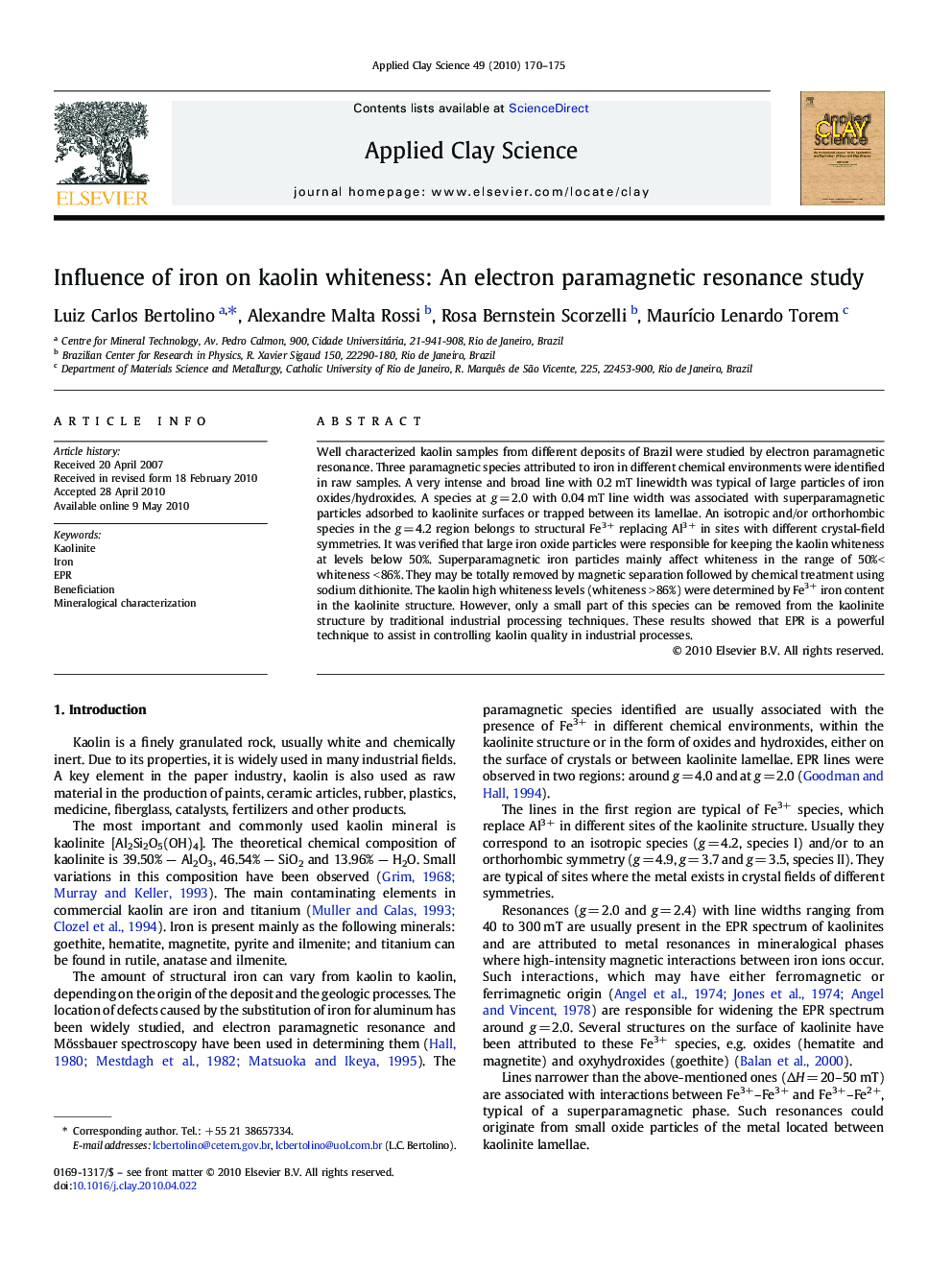| Article ID | Journal | Published Year | Pages | File Type |
|---|---|---|---|---|
| 1695850 | Applied Clay Science | 2010 | 6 Pages |
Well characterized kaolin samples from different deposits of Brazil were studied by electron paramagnetic resonance. Three paramagnetic species attributed to iron in different chemical environments were identified in raw samples. A very intense and broad line with 0.2 mT linewidth was typical of large particles of iron oxides/hydroxides. A species at g = 2.0 with 0.04 mT line width was associated with superparamagnetic particles adsorbed to kaolinite surfaces or trapped between its lamellae. An isotropic and/or orthorhombic species in the g = 4.2 region belongs to structural Fe3+ replacing Al3+ in sites with different crystal-field symmetries. It was verified that large iron oxide particles were responsible for keeping the kaolin whiteness at levels below 50%. Superparamagnetic iron particles mainly affect whiteness in the range of 50%< whiteness < 86%. They may be totally removed by magnetic separation followed by chemical treatment using sodium dithionite. The kaolin high whiteness levels (whiteness > 86%) were determined by Fe3+ iron content in the kaolinite structure. However, only a small part of this species can be removed from the kaolinite structure by traditional industrial processing techniques. These results showed that EPR is a powerful technique to assist in controlling kaolin quality in industrial processes.
